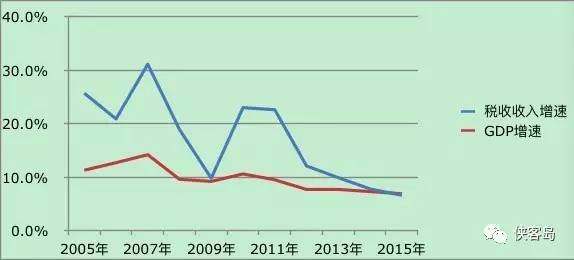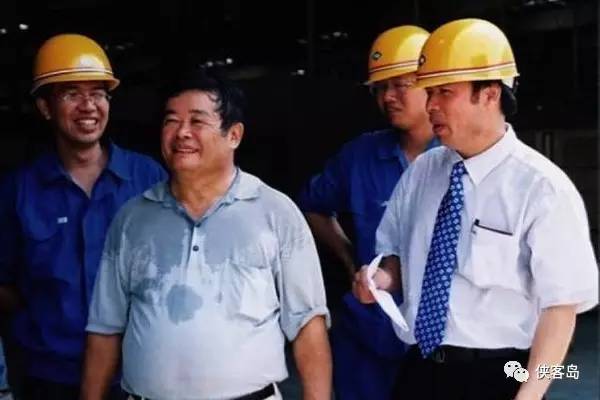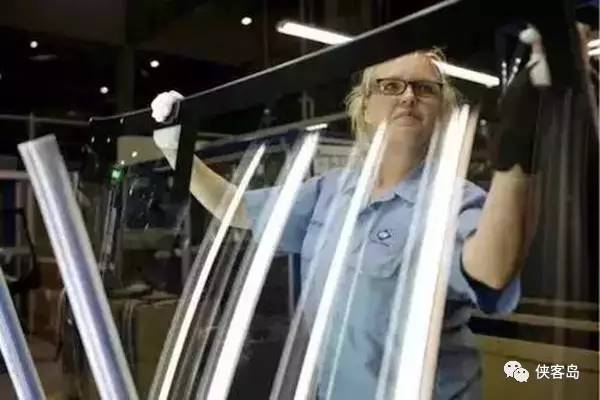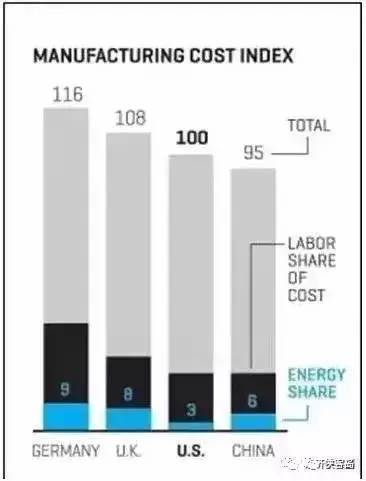It is said that this is not a "news", almost a matter of two months ago. As a result, in an interview with the media, Cao Dewang was very straightforward and said a bunch of big truths, such as "the cost of China's real economy, except for people, it is more expensive than the United States", "the comprehensive taxation of China's manufacturing industry is 35% higher than the United States" "Repetitive construction of investment, one year of serious one year", "It will be good next year, next year will be good, tomorrow will be good. Who does not want to be good tomorrow. Will it be unrealistic to do that tomorrow? I don't think so." I think we should change this way. Especially for those of you who do the media, and so on.
One truth came down, some people wondered: Cao Dewang is the rhythm of "running"?
In the eyes of Uncle Island, of course not. However, after Li Ka-shing polished the news of the landing of domestic assets, everyone will be somewhat sensitive. The problem of the domestic business environment exposed by Cao Dewang’s words and deeds is considered to be a real problem. In other words, why do private enterprises, especially real enterprises, “run�
Tax burden
Looking far away from Li Ka-shing, looking at Cao Dewang, investing overseas is everywhere in the entrepreneurial circle: Shandong Sun Paper will invest more than 1 billion to 1.3 billion US dollars to build a factory in Arkansas, and China Tianyuan Textile will invest 20 million US dollars. Arkansas set up a garment manufacturing factory... Unlike Trump’s statement that China “stolen jobs in the United Statesâ€, Cao Dewang’s abandoned factory, which was acquired from GM’s low-cost, could provide 2,500 jobs at full capacity. post.
Why are entrepreneurs running out? There are many reasons for this, but it is also reasonable.
Let me talk about the most intuitive, tax burden. In recent years, the profit growth of domestic enterprises has been weak, and the profit rate can be more than 10%, which is quite enviable. However, after several tax cuts by the state, there are still many companies complaining.
Where do the tax burdens of domestic companies mainly come from? In addition to 25% corporate income tax, there are up to 10% VAT, not to mention stamp duty, vehicle and vessel tax, urban construction tax, education surcharge, local education surcharge and other taxes and fees.
Is China’s tax burden high? Different people, companies, and institutions have been verified through various channels and methods, giving consistent answers.
For example, Cao Dewang said that the income tax levied by the United States on enterprises is 35%, plus 10% of the other five percentage points of local taxes and insurance premiums, while the comprehensive taxation of Chinese manufacturing industry is 35% higher than that of the United States;
According to data given by Zhou Tianyong, a professor at the Central Party School, the huge burden of Chinese companies is that the macro tax rate is too high. In 1995, the macro tax rate was only 16.5%. In 2000, it was only 21%. In 2005, it was 26%. In 2010, it was 36%. In 2015, the company’s macro tax rate was nearly 37%.
According to Li Shuguang, a professor at Tianjin University of Finance and Economics, the comprehensive tax burden of Chinese enterprises has reached more than 50%, ranking fourth among 21 APEC countries. Its view is more radical: China's tax rate allows companies to pay taxes honestly, basically on the verge of death, which is the "death rate."

Therefore, even if the data of each party is different due to the caliber and measurement methods, everyone's basic judgment is consistent: the current tax burden of enterprises is indeed high.
A more realistic problem is that private enterprises are often in a more disadvantageous position when corporate tax burdens are generally heavier. For state-owned enterprises, the state often gives tax rebates. Some monopoly-type central enterprises are concentrated in the upstream links of the industrial chain, and the tax burden is mainly passed on to the middle and lower reaches enterprises and consumers; if the central enterprises with special scale and business types are excluded, the tax burden rate of private enterprises is significantly higher than that of local and ministries. State-owned enterprises.
Fleeing?
In addition to tax burdens, Chinese companies choose to go out, there are many reasons -
Domestic factor costs have risen. The first is the scarce resources like land. Zong Qing later vomited: Now the price of industrial land needs hundreds of thousands, millions of acres, and who invests so much?
At the same time, energy prices such as water and electricity have always been firm. When the cost of raw materials and other costs is basically stable or even decreased, the proportion of such costs in the total cost of the enterprise does not fall. The People’s Daily has reported that some enterprises have to pay millions of yuan in transformers for basic electricity even if they do not use electricity for one month and report to the power supply department.
Institutional costs, such as environmental assessment, energy assessment, clean production, etc., whether it is time cost or cost, which is not low.
Property rights protection. For a long time, the protection of property rights has not become a heart disease for entrepreneurs. No permanent people have no perseverance, property rights are not protected, and who can seriously operate? In some places, the money owed by state-owned enterprises to private enterprises can be disposed of as commercial disputes. The money owed by private enterprises to state-owned enterprises is considered to be invading state-owned assets. How can people not be chilling?

Law enforcement is arbitrary. Island girl has friends in the local business to be a small boss, privately spit out, many companies now, just to say that the fire-fighting facilities, if you really do as required, I am afraid that few can survive. The reality is that everyone is not qualified. When the relevant departments check, the discretion is very big, and will be punished. It depends on how the company itself "operates".
There are also many invisible costs. At that time, Ma Chaoqun, who burned out the money counter, was the general manager of the local water supply company and the district-level cadre. Why did he find more than 100 million yuan in his home? According to media reports, if enterprises settle in the local area, they will not be able to pass the water without paying for it. This invisible cost makes the company more scared than the visible cost.
Some local governments have to say that they “pamper†the virtual economy and ignore the long-term, low-return manufacturing and real economy. Although development cannot be based on GDP, there are still "steady growth" considerations during the assessment. How can it be ecologically green and have high profits? As a result, the “Gao Fu Shuai†industry, such as finance and real estate, has become the palm of the hand of some local governments.
After reading these and comparing the US “manufacturing return†policy, the appreciation of the US dollar, and the increasing attractiveness of assets, it is even more understandable that Cao Dewang said that the cost of white-collar and blue-collar workers in the United States is 2 times and 8 times that of China. Underneath, still earn more than 10% more than China.
It is hard to leave the land, but both capital and enterprises must always benefit.

It is a good thing that Chinese enterprises and capitals go to sea to optimize the allocation of global resources. The government has long advocated that Chinese enterprises “go globalâ€. Why is it now that it has become more and more mixed?
On the one hand, the growth rate of domestic private investment has fallen sharply, and investment mainly relies on the “national teamâ€; on the other hand, the growth rate of Chinese enterprises' foreign investment has frequently increased, and the domestic manufacturing and real economy are facing the danger of “hollowingâ€.

In particular, the part of the cost reduction, the central government put forward, "in order to reduce the tax reduction, reduce fees, reduce the cost of factors; work to reduce various transaction costs, especially institutional transaction costs, reduce the approval process, reduce the evaluation of various types of intermediary Costs, reduce energy costs for enterprises, reduce logistics costs, increase labor market flexibility, and promote the company's eyes to reduce costs and increase efficiency. According to the analysis of the previous article by the island, this year’s economic work conference has a strong sense of awareness and pertinence. It is also seen that the problem of weak growth in the domestic real economy and the problem of “deviating from reality†has reached an unavoidable level.
Entrepreneurs have made great efforts to build factories and have their own helplessness. We need to promote entrepreneurs' sense of social responsibility, but companies can only take on more social responsibilities if they survive first. If under the current domestic multiple pressures, you can't get normal profit for sustainable development, going out of the country to find a more suitable place can only be a natural choice in line with the logic of the market economy.
What we have to reflect on is why the governments at all levels have reduced the burden on enterprises for so long, and the tax burden is still high. Is the original base number too high, and the current reduction is limited? Or has the tax burden decreased, and other unclear cost gates have been reopened, increasing the burden on enterprises in disguise? These are worthy of high attention.
To fight for the entrepreneur's heart, you can't rely on your mouth to talk about it, you have to have a real effect. The spirit of the Central Economic Conference talks about the entrepreneur's heart, the central government is very anxious, but it is difficult to implement, and actually reduce the burden on enterprises, there will be a painful contest and game process.
Whether your excavator has recently rolled off the assembly line or has been a dependable part of your heavy equipment fleet for many years, JUHENG is sure to carry the exact replacement parts you need. We offer a huge assortment of brand-new Kobelco Excavator Parts, as well as dependable remanufactured parts that enable you to cut costs without sacrificing quality. Our inventory includes everything from piston pumps and buckets to engines for mini, small, medium and large excavators.
At JUHENG, we aim to offer our customers the best value-for-money aftermarket Kobelco Excavator parts, through competitive pricing and by only providing high quality, long-lasting spare parts.
Reduce your machine downtime, drive more efficient operations, and improve maintenance cycles with our wide range of Kobelco Final Drive , Kobelco Travel Motor , and Kobelco Travel Gearbox, Kobelco Drive Parts.
We provide parts for all makes and models of Caterpillar Excavators, from the 1-tonne 300.9D Mini Excavator, to the 100-tonne 390F L, as well as other brands such as Komatsu, CASE, Kubota, JCB, John Deere, Volvo, and many more.
Kobelco Final Drive,Kobelco Final Drive Assy,Kobelco Travel Motor,Kobelco Travel Gearbox,
With solutions available for over 170 Kobelco excavator models, we are sure to have the Kobelco final drive or travel motor you need.long-standing final drive provider.and 15 month warranty on final drives.
Kobelco Final Drive Spare Parts,Kobelco Drive Parts,Kobelco Motor
Kobelco Final Drive,Kobelco Final Drive Assy,Kobelco Travel Motor,Kobelco Travel Gearbox,Kobelco Final Drive Spare Parts,Kobelco Drive Parts,Kobelco Motor
Jining Juheng Hydraulic Machinery Co., Ltd. , https://www.jhexcavator.com